Large Language Models Explained: How LLMs are Revolutionizing AI
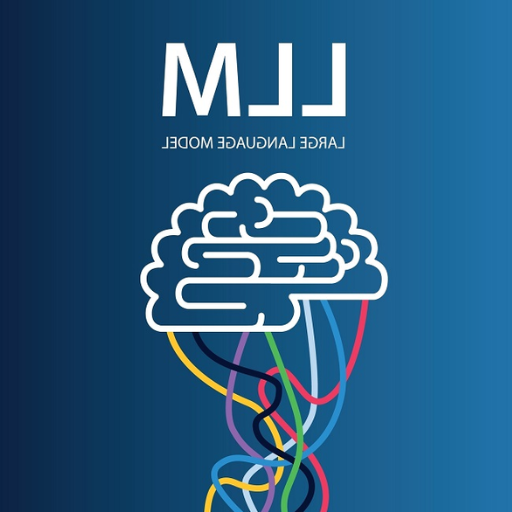
The development of Large Language Models (LLMs) marks a remarkable leap in AI technology because of how machines understand and produce human language. This piece aims to help you grasp the intricacies of LLMs by explaining their fundamental features, functionality, and potential disruption to business industries. LLMs are at the center of AI innovation today, and their importance in contemporary technologies stems from the detailed infrastructure that supports them and their practical implementations. Furthermore, we will briefly explore the gaps and social implications that stem from the sudden advancement of LLMs. Ultimately, you will learn how LLMs operate, their present-day relevance, and the possibilities for the technology.
What are Large Language Models (LLMs)?
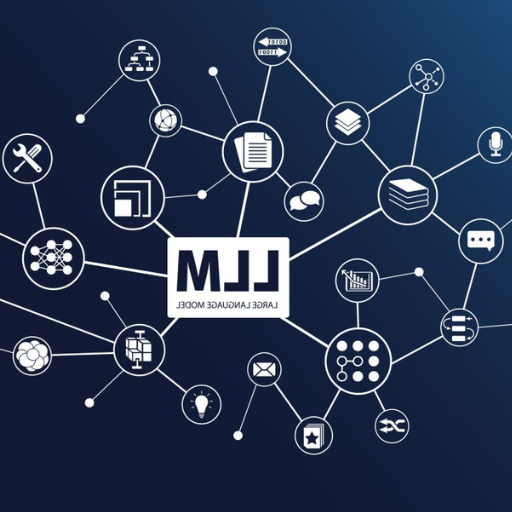
Using tremendous datasets, an LLM or Large Language Model is an advanced AI system that autonomously undertakes and manages multiple tasks revolving around language. They comprehend sentences within a specific context and translate or create new sentences using appropriate adjectives, which enables them to provide answers and execute tasks about language autonomously. LLMs constitute deep learning models such as transformers, which let these systems aid in creative writing, construction, sentence translation, question-answers, and many more, boosting productivity in almost every area possible.
Definition and Key Characteristics of LLMs
LLMs are Large models built on deep neural networks that process human language. Due to their high volume of datasets, these models can also comprehend complex language structures and forms, making them capable of undertaking various scopes revolving around writing, from analyzing sentiment to translation or even summarization. The wide-scoped training allows them to understand social and industrial contexts, making them highly suitable for personalized and context-driven approaches across different industries.
How LLMs differ from traditional AI models
LLMs' scalability, structural design, and functionality are the primary features that set them apart from traditional AI models. Unlike LLMs, most traditional AI models are designed for a specific task under sophisticated algorithms with limited datasets. Some prominent features are:
- Scope of Training Data
- Traditional AI Models: Focussed on narrow-domain AIs with restricted datasets.
- LLMs: Collection of multiple domains in massive size consisting of trillions or even billions of tokens.
- Model Framework
- Traditional AI Models: Feature-specific task-oriented simpler decision trees or linear regression architectures.
- LLMs: Utilizes transformer frameworks with self-attentive features for contextual comprehension.
- Generalization Ability
- Traditional AI Models: Accomplish various tasks exceptionally well but experience challenges with additional unconventional tasks.
- LLMs: They are significantly more flexible and capable of performing actions from summarization to language generation with no further training for the new specified task.
- Scale and Parameters
- Traditional AI Models: Commonly fall in the range of thousands to millions of parameters.
- LLMs: Contains billions or trillions of parameters, enabling profound comprehension and generation of nuanced content (GPT-3, for instance, with 175 billion parameters).
- Inference and Flexibility
- Traditional AI Models: Set range of tasks with no contextual learning.
- LLMs: Need undertake sophisticated multitasking achieving context comprehension while producing and understanding human like text.
This classification allows for LLMs to be regarded as flexible technologies that can solve numerous problems, but it also comes with increased computation requirements for training and deployment.
Examples of Popular LLMs are GPT-3 and ChatGPT
Familiar examples of Large Language Models (LLMs) are OpenAI's GPT-3, which can generate relevant text for multiple tasks, and ChatGPT, a tuned version of GPT designed for conversation. Google’s BERT-(Bidirectional Encoder Representations from Transformers) model is also remarkable as well which outstands language understanding owing to its deep understanding of contextual nuances of the text. It is within these models, using the newest transformer architecture, where the spikes of Natural Language Processing are observed.
How do Large Language Models work?
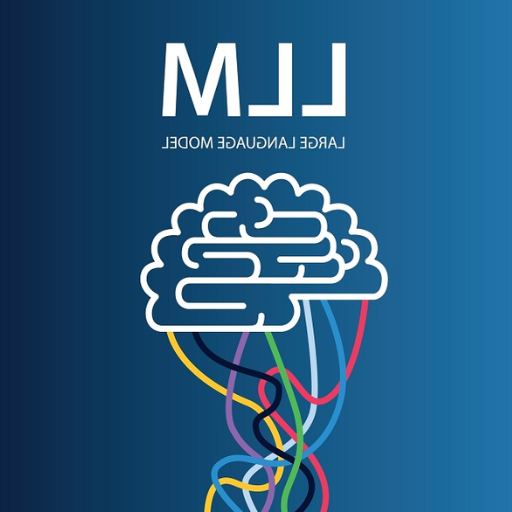
OpenAI’s ChatGPT needs no introduction. Most people are familiar with ChatGPT, an AI-powered chatbot designed for chatting. All LLMs use neural networks, specifically transformer architecture, to process and create text that mimics human communication. They need a large amount of data to train the model, enabling it to identify context, patterns, and relationships across various languages. Other processes like tokenization, where the text is converted into small parts ‘tokens,’ and attention, where the specific part of the text is focused on, also help generate context and coherent responses. In sequence text generation, th. These tasks typically include but are not limited to responding to questions, summarizing texts, and engaging in dialogues.
The role of transformer architecture in LLMs
Transformers have entirely changed the architecture of large language models (LLMs) by accurately organizing sequential data. Self-attention is the most crucial feature of the architecture, which splits the input sequences into segments that could be worked on in parallel as opposed to the traditional method of sequential processing by RNNs. Doing so made it possible to train these models far more quickly than feasible and incorporate long-range dependencies in text. Maintaining context and producing coherent responses relies on multi-head attention, feedforward networks, and positional encodings—multidimensional features that prepare the context.
Other technical specifications portioned through the transformer architecture are:
- Several layers/transformer blocks – generally set between 12 (GPT-2 small) and 96+ (GPT-3).
- Attention heads – range from 8 to 96 relative to the model size.
- Hidden dimension size - 512 to 12,288, limits the number of minor details the model can capture.
- Model parameters: For the most critical LLMs, this figure can range from millions (GPT-2, 117M params) to hundreds of billions (GPT-3, 175B params).
- Sequence length indicates the quantity of input the model can process simultaneously. It is typically between 512 and 2048 tokens.
Transformers have enabled LLMs to achieve unprecedented results in understanding and generating human speech. Because of their practicality and versatility, they are the most powerful tool for developing modern AI systems.
Training process and dataset requirements
Large language model (LLM) training artificially is a long process, engaging numerous preparation phases, in addition to the expensive computational overhead and thorough data. First, I perform a cleansing and formatting operation on the selected data to meet the required quality standard. The datasets include almost everything a person may type in the available corpus, ranging from text from the internet to prepared datasets such as Common Crawl or Wikipedia. The datasets must span a much wider range of topics for the model to generalize well. The training process depends on GPUS or TPUS, where the baseline model automatically derives structures and patterns from the data by continuously decreasing prediction errors over a set period. We often partition the dataset into a training, validation, and testing partition to balance optimally achieving learning and overfitting the model.
Understanding Tokens and Parameters in LLMs
Without tokens and parameters, one cannot comprehend the most simplistic aspects of large language models that are standard to everyone(LLMs). A token can refer to the most basic block of a sentence and maybe a character, word, or even a group of words. LLMs function by decomposing the input they receive into tokens that, during both training and inference, are used to predict the next token that resides in a sequence. The phrase ‘Artificial Intelligence’ for instance, may be tokenized by the tokeniser to take on the form of [ ‘ Artificial’, ‘Intelligence’] or smaller parts depending on how the tokeniser is designed.
Oppositely, parameters correspond to the numbers set in the framework, which are modified during its run in order to decrease the forecast discrepancies. Their modification relates specifically to the model's comprehension of structures and associations within the language. For example, modern LLMs such as GPT-3 have 175 billion parameters, providing them with the ability to produce output text that is not only relevant but exhaustive in detail. Other prominent LLMs, such as BERT, might not have as many parameters but emphasize understanding tasks through bidirectional contexts, such as sentiment analysis and question-answering.
Critical technical data for LLMs are:
- The model’s Number of Layers (Depth) defines how regionally complex the model's features can be recognized (for instance, GPT-3 features 96 transformer layers).
- The number of parameters (Size): Affects the capability of the model’s performance; models like GPT-4 must have even more than that of GPT-3.
- The Token Limit (Context Window) determines the amount of text information the proprietary model may receive instantaneously for processing. For instance, GPT-3 has approximately 4096 tokens, as against 8000 and more tokens for recent models like GPT-4.
- The Learning Rate (Training): Determines the speed of the model’s excursion within the patterns of the training data’s elements at the given stage.
- Batch size (training) defines the number of elements processed simultaneously, affecting training efficiency and precision.
Adjusting the LLM’s parameters during the design and training phases enables developers to balance scalability and accuracy, which is essential for the functionality of LLMs in natural language processing.
What are the key capabilities of Large Language Models?
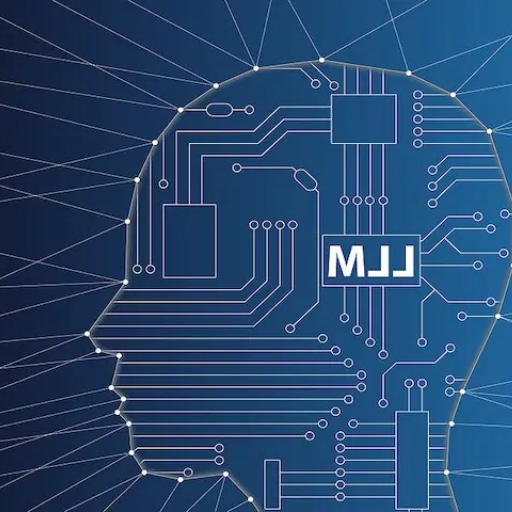
Captions and subtitles are automatically generated using AI tools to translate the spoken content into several languages, transforming global communications. LLMs have fundamentally changed communication. Important capabilities are:
- Text Generation: LLMs can generate relevant and coherent context language, making them optimal for creative writing, content authoring, and summarization tasks.
- Language Translation: To enhance communication, LLMs can accurately translate between many languages.
- Question Answering: LLMs can answer questions by retrieving information, given the context and the relevant data.
- Sentiment Analysis: LLMs can identify the sentiment in text, which is essential in analyzing social media or customer feedback.
- Text Classification: LLMs can categorize information into different categories, which is helpful for spam detection, topic segmentation, and other purposes.
- Conversational Agents: These agents work alongside chatbots and virtual assistants, responding to user queries with relevant text in real time.
These capabilities enable LLMs to efficiently address intricate lingual challenges and language-oriented problem capabilities, which have become indispensable in any business context.
Natural language processing and generation
Regarding the above, I will respond in a brief, first-person account of LLMs and their functionality in Natural Language Processing and Text Generation.
I specialize in text classification, which is helpful in spam filtering and topic detection. It is within my capabilities to help in the summarization and sentiment analysis of the text to provide actionable insights on customer feedback or social media analysis. In addition, I can provide humanized responses to conversational interfaces like virtual assistants and chatbots. I intend to achieve realistic and meaningful language solutions by employing these strategies.
Few-shot and zero-shot learning abilities
Few-shot and zero-shot learning are sophisticated natural language processing processes that enable models to function decently with minimal or no examples. In few-shot learning, only a small number of context examples are provided to perform specific tasks, making it useful for situations with insufficient labeled data. Meanwhile, in zero-shot learning, the model’s pre-trained knowledge is utilized to perform new tasks without examples being trained against, thus taking advantage of the model's understanding of language.
Key Technical Parameters
- Model Size: When accomplishing few-shot and zero-shot tasks, most people default to GPT models like GPT-3.3.1 or any of its newer versions because their transformer architecture can generalize across functions.
- Context Window Length: For context tokens in few-shot setups, it is recommended to have 2048 tokens or more to ensure context is provided.
- Pre-Training Corpus: A broad and sufficient-depth corpus enables the model to perform excellent zero-shots and improve its general knowledge.
- Learning Objective: Make sure your model has been trained with autoregressive decoding as the optimization target and latter placed into the model for text generation and comprehension.
- Temperature and Top-p Sampling: For creative tasks, set the temperature between 0.7 and 1.0. Set the top at a 0.9 ratio to generate diverse output in zero-shot tasks.
- The design of prompts requires the creation of precise and relevant examples for few-shot learning.
With the strategic use of these parameters, models can solve sophisticated or novel problems and, hence, widen their scope of usage.
Code generation and language translation
Like the practical uses of sophisticated model machine modeling approaches like natural language directives transforming into executable codes and text to be translated into different languages, language translation involves the generation of code from various input sources, tasking language models to achieve high-level outputs out of unstructured data. OpenAI’s Codex and Google’s PaLM are currently the most popular models used for code generation. These models have been trained on a large corpus of computer programming languages, which enable them to perform other coding tasks with auto code completion, debugging, and even building whole applications. The main essential features for generating code include:
- Maximum Output Sequence Length: usually bounded for most coding activities within 256 to 1024 tokens.
- Temperature tends to depend on greater output precision ranging from 0.2 to 0.5 for precision and less random output generation.
- Top-up sampling: Between 0.8-0.9 for coherency and creativity of what is being encoded into the code.
As for language translation, various tools and models have been developed, such as Google’s NMT and Meta’s NLLB, that use transformer architecture and deep neural for high-quality translation, enabling no language to be left behind. Essential features for optimum translation are:
- Embedding Size: the most common values are in 512 and 2048 dimensions for an efficient lower degree of lexicon and syntax components encapsulation.
- Batch Size: It is set and tuned for 64 and 256 to optimize throughput, but there is no loss in translation accuracy.
- Beam Search Width: pragmatic for translation proficiency and accuracy set to 4 to 6.
In enhancing these features and accommodating user input, code generation, and language translation systems are advancing and producing increasingly accurate outputs relevant to a given context.
What are the use cases and applications of LLMs?
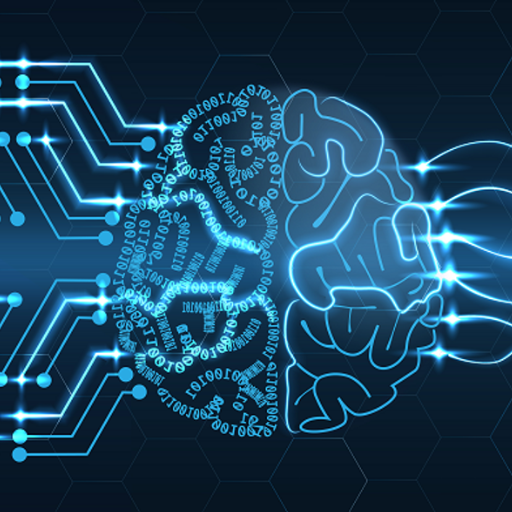
Large Language Models (LLMs) are helpful in various industries. They actively participate in natural language processing activities like translation, sentiment evaluation, summarization, and customer service chatbots. LLMs are also essential in automating writing articles, emails, and creative pieces. Developers use LLMs for writing and debugging programs, while teachers employ them as personalization tools and in automated marking of student assessments. Furthermore, LLMs are used in medicine for documentation and in business for report analysis and writing. Their adaptability makes them exceptional for functions that need understanding and production of text.
AI-powered content creation and copywriting
With the advancement in technology, AI-powered tools have aided in faster content generation, which paints the text in the best possible light. These tools are implemented with advanced language models like GPT, which understand and determine the context, style, and tone, along with the audience for which they are meant. They help in capturing attention through appealing articles and advertisements along with storytelling. There is no denying the fact that automating the drudgery along with collateral inspiration lets people reflect on the more strategic and creative work they want to be done. It has been emphasized and proved by countless leading platforms that AI has greatly improved productivity and consistency and helped eliminate the dreaded writer’s block, which serves as an anchor around the neck of modern content creators and marketers.
Chatbots and virtual assistants
Chatbots and virtual assistants represent artificial intelligence (AI) technologies that improve the communication and user interaction experience. They apply Natural Language Processing (NLP) algorithms and machine learning to recognize and respond to users’ actions in real time. Chatbots feature prominently in customer service, providing immediate solutions to simple questions or problems. At the same time, virtual assistants such as Siri, Alexa, and Google Assistant are more multifaceted. They can tend to their users’ requests more elaborately, like setting reminders, operating smart home devices, or giving tailored suggestions.
The fundamental technical parameters. At the same time, virtual assistants such as Siri, Alexa, and Google Assistant are more multifaceted and able to tend to their users’ requests in more elaborate ways, like setting reminders, operating smart home devices, or giving tailored suggestions systems including:
- Natural Language Processing (NLP):
- The capability of interpreting the human language as it is spoken or written.
- Commonly used tools are Python libraries like spaCy, NLTK, or ready models like GPT.
- Response Time:
- Smooth interaction is fostered when the response time is below 1 second for advanced systems to function optimally.
- Integration Capabilities:
- Connecting to services or APIs like CRM systems, social networks, or payment processors.
- Machine Learning:
- Always active algorithms that, based on user activity, continuously refine their answers and responses.
- Security:
- Users’ confidential information is guarded through measures like encryption with AES-256 schemas.
These tools now play a key role in everyday business and personal tasks, offering innovative, effortless, and effective ways to communicate and automate activities.
Research and Data Analysis Applications
In my experience with research and analysis, AI-powered and machine-learning tools have become essential. In particular, platforms like Google Cloud AI and Python and libraries like NumPy and pandas help automate routine tasks like data cleansing, visualization, and even predictive analysis. Moreover, using APIs facilitates the integration of real-time data sources for efficient aggregation and deeper insights. As always, security research is always essential. Utilizing secure architectures, such as those with end-to-end encrypted systems, is a must. In short, these advancements greatly enhance decision-making by transforming complex datasets into actionable intelligence with remarkable speed.
How do Large Language Models compare to the human brain?

These LLMs functions differently when compared to the human brain. Like GPT, LLMs depend on pattern recognition, computation, and massive volumes of data. The human brain, in contrast, processes information through time-enabled neural linkage and is fueled by feelings, emotions, logic, and reasoning. Though LLMs are superior in accessing and processing data at a high volume, they are deficient in consciousness, emotional intelligence, and understanding of meanings. Because of these factors, humans are more efficient creators and adaptable beings, demonstrating creativity in all aspects of life.
Similarities and differences in language processing
Even though I have not gone in-depth with this idea, it appears that the comparison between Large Language Models (LLMs) and the human brain captures the similarities and differences in how these two systems handle language. In short, LLMs depend on data vernaculars and statistical likelihood to build a response, whereas humans utilize neural pathways that employ emotions, reasoning, and prior experience to formulate answers. The two systems process inputs to identify patterns; however, social context and human meaning help make the distinction during the integration process. In contrast to LLMs, humans are not stuck with pre-trained data; therefore, ideas are built from subjective experiences, and innovation becomes the new norm. Humans view and understand the world around them differently than computers, for the latter there is mere functionality while for humans, depth and intuition play a significant role that leaves LLMs far behind.
Limitations of LLMs compared to human intelligence
I believe that LLMs, despite their astonishing capabilities, are fundamentally different than a human’s form of intelligence. To start, LLMs do not understand reality because one does not exist in which they operate; they depend on patterns in training data and lack thought and awareness. In comparison, human intelligence functions emotion-based, ethical, and experiential, unlike anything else. Next, LLMs do not possess the ability to generalize reason, which places them outside of the realm of Gollum in terms of logic and makes a considerable difference in how humans approach problem-solving. Further, generating new outputs outside one’s training scope presents a challenge. Humans can make novel contributions and are constantly willing to learn and work with limited resources. In addition, LLMs have been observed to necessitate immense computational power, purportedly up to hundreds of billions of parameters like GPT-3's 175. These aspects highlight the fact that the rational nature of the human brain is extraordinary; with 86 billion neurons working together in an intricately built energetic system, it can process complex stimuli. Finally, robots like LLMs are bereft of the capability to sense emotions or social motives because they do not have to rely on human interactions. These distinctions illustrate gaps in the capabilities of equipping LLMs or SpaceX-like technologies with functioning human intelligence and thought.
References
- AWS: What is LLM? - Large Language Models Explained
- Medium: How Large Language Models Work. From zero to ChatGPT
- IBM Research Blog: LLMs revolutionized AI
Frequently Asked Questions (FAQ)
Q: What are Large Language Models (LLMs), and how do they work?
A: Large Language Models (LLMs) are advanced artificial intelligence systems trained on vast amounts of text data. These models use deep learning techniques, particularly transformer-based architectures, to understand and generate human language. LLMs work by processing input text and predicting the next word or sequence, allowing them to create coherent and contextually relevant responses.
Q: How are language models trained, and what data do they use?
A: Language models are trained on massive text datasets from various sources, including books, websites, and online articles. The training involves exposing the model to this data and allowing it to learn patterns and relationships between words and concepts. LLMs use machine learning algorithms to adjust their parameters and improve their ability to understand and generate text based on input.
Q: What are some popular examples of LLMs?
A: Some well-known examples of LLMs include GPT-3 (Generative Pre-trained Transformer 3), BERT (Bidirectional Encoder Representations from Transformers), and models like ChatGPT. These models have gained popularity due to their ability to perform various natural language processing tasks, from text generation to question-answering and language translation.
Q: How do LLMs contribute to generative AI?
A: LLMs are a cornerstone of generative AI. They enable machines to create human-like text, answer questions, and generate creative content. By understanding and predicting language patterns, LLMs can produce coherent and contextually appropriate responses to prompts, making them valuable tools for various applications in content creation, customer service, and more.
Q: What are some key benefits of large language models?
A: Large language models (LLMs) have many benefits, including their ability to understand and generate human-like text, perform various language-related tasks, and adapt to new contexts through few-shot learning. They can also be fine-tuned for specific applications, making them versatile tools for businesses and researchers. Additionally, they can process and analyze vast amounts of textual data, providing insights and automating tasks that would be time-consuming for humans.
Q: How do LLMs use transformer models in their architecture?
A: LLMs typically use transformer models as their core architecture. Transformers consist of an encoder and a decoder, which allow the model to process input text and generate output simultaneously. This architecture enables LLMs to capture long-range dependencies in text, understand context, and develop coherent responses. The transformer's attention mechanism helps the model focus on relevant parts of the input when processing and generating text.
Q: What are some everyday use cases for LLMs?
A: LLM use cases are diverse and expanding. Some typical applications include chatbots and virtual assistants, content generation for articles and marketing materials, language translation, sentiment analysis, and text summarization. LLMs are also used in research, creative writing, code generation, and even in helping to solve complex problems in fields like healthcare and scientific research.
Q: How do the number of parameters and training data affect LLM performance?
A: The number of parameters and training data significantly impact LLM performance. Generally, larger models with more parameters can capture more complex language patterns and perform better on various tasks. Similarly, training on more extensive and diverse datasets improves a model's understanding and generation capabilities. However, there's a trade-off between model size, training data, and computational resources required for training and running these models.
Q: What are some challenges and limitations of current LLMs?
A: Despite their capabilities, LLMs face challenges such as potential biases in their training data, difficulty maintaining factual accuracy, and limitations in understanding context beyond their training data. They may also struggle with tasks requiring common sense reasoning or up-to-date information. Additionally, the computational resources needed for training and running large models can be substantial, raising concerns about environmental impact and accessibility.
Q: How are researchers working to improve LLMs, and what future developments can we expect?
A: Researchers continually work to enhance LLMs by developing more efficient training methods, improving model architectures, and addressing current limitations. Future developments may include more advanced multimodal models that simultaneously process and generate text, images, and other data types. We can also expect improvements in model efficiency, allowing for smaller models with similar performance to current large models. Additionally, efforts are being made to make LLMs more interpretable, ethically aligned, and capable of more advanced reasoning tasks.